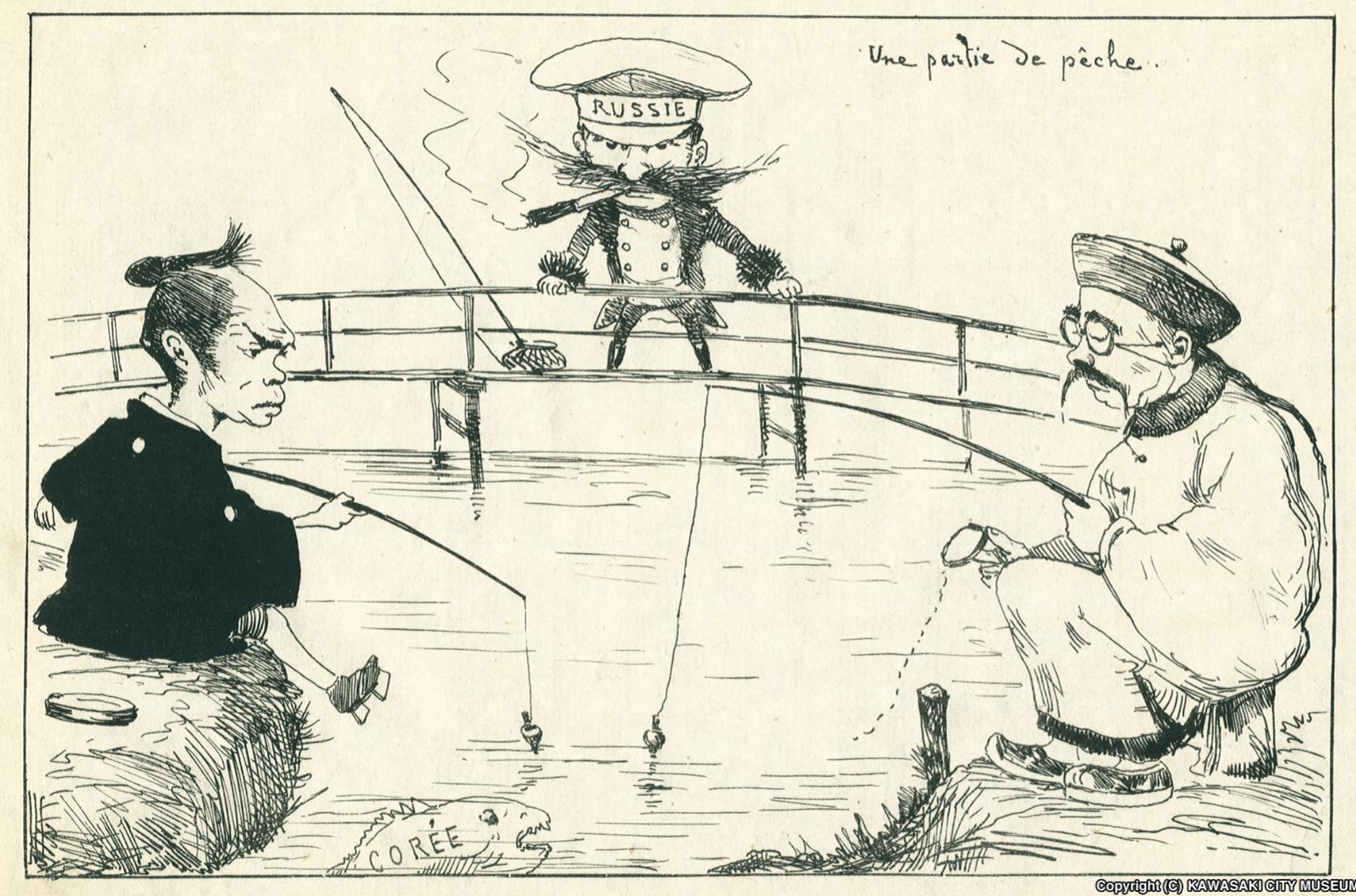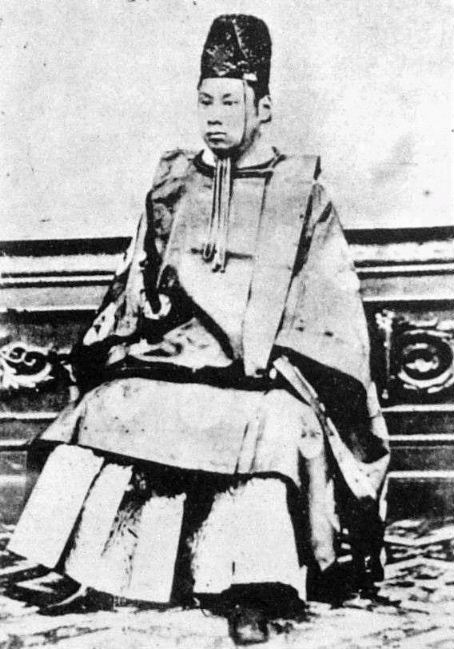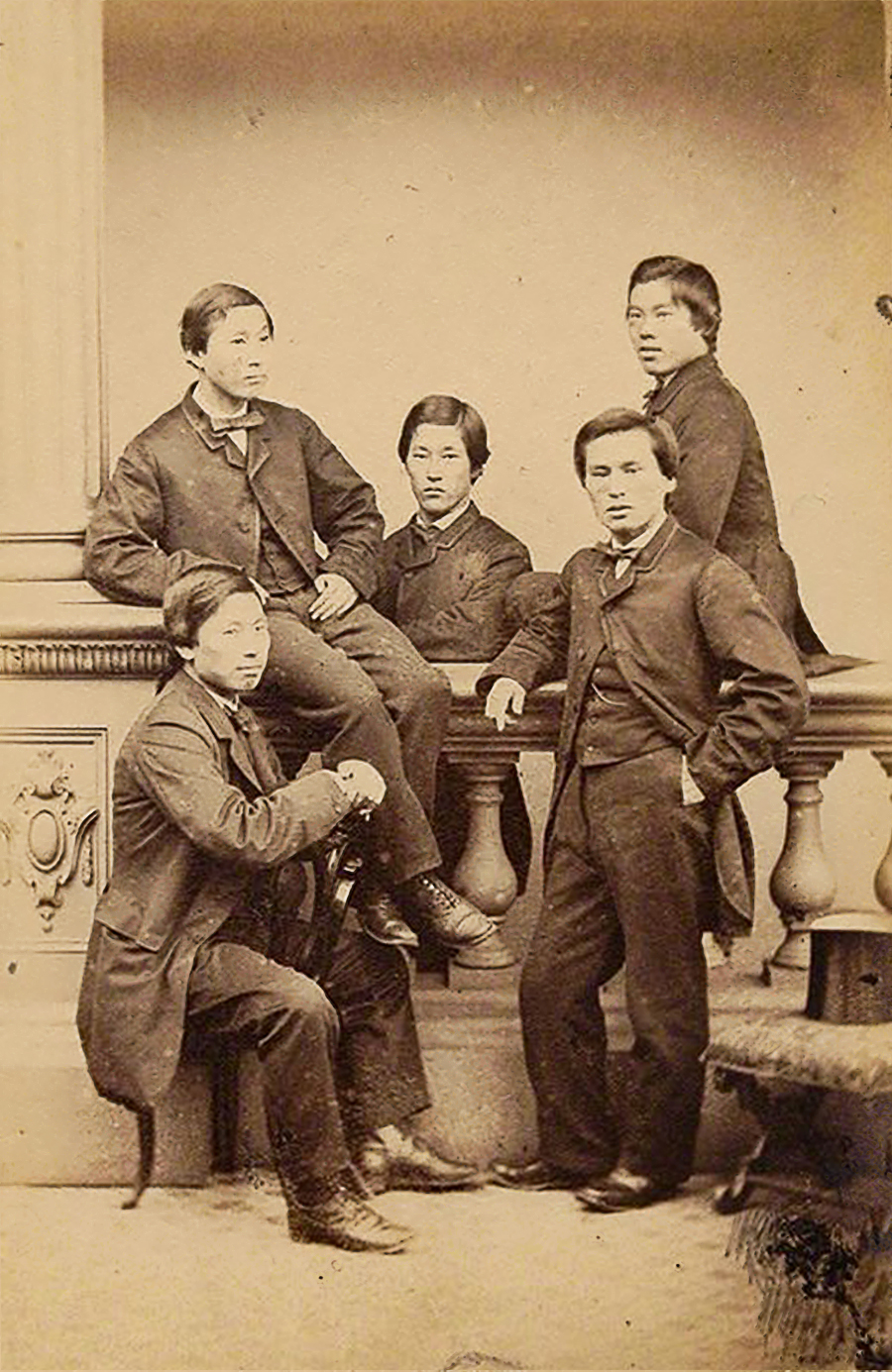|
Sino-Japanese War (1894–1895)
The First Sino-Japanese War (25 July 189417 April 1895), or the First China–Japan War, was a conflict between the Qing dynasty of China and the Empire of Japan primarily over influence in Korea. In Chinese it is commonly known as the Jiawu War. After more than six months of unbroken successes by Japanese land and naval forces and the loss of the ports of Lüshunkou (Port Arthur) and Weihaiwei, the Qing government sued for peace in February 1895 and signed the unequal Treaty of Shimonoseki two months later, ending the war. In the late 19th century, Korea remained one of China's tributary states, while Japan viewed it as a target of imperial expansion. In June 1894, the Qing government, at the request of the Korean emperor Gojong, sent 2,800 troops to aid in suppressing the Donghak Peasant Revolution. The Japanese considered this a violation of the 1885 Convention of Tientsin, and sent an expeditionary force of 8,000 troops, which landed at Incheon. This army moved to S ... [...More Info...] [...Related Items...] OR: [Wikipedia] [Google] [Baidu] |
Battle Of Pungdo
The Battle of Pungdo (Japanese: ) was the first naval battle of the First Sino-Japanese War. It took place on 25 July 1894 off Asan, Chungcheongnam-do, Korea, between cruisers of the Imperial Japanese Navy and components of the Chinese Beiyang Fleet. Both Qing dynasty, China and Empire of Japan, Japan had been intervening in Korea against the Donghak Peasant Revolution. While China tried to maintain its suzerain relationship with Korea, Japan wanted to increase its sphere of influence. Both countries had already sent troops to Korea as requested by different factions within the Korean government. Chinese troops from the Huai Army, were stationed in Asan, south of Seoul, numbering 3,000 men in early July, could be effectively supplied only by sea through the Bay of Asan. The Japanese plan was to blockade the entrance of the Bay of Asan, while its land forces moved overland to encircle the Chinese detachment in Asan before reinforcements arrived by sea. Background In the early mo ... [...More Info...] [...Related Items...] OR: [Wikipedia] [Google] [Baidu] |
Deng Shichang
Deng Shichang (4 October 1849 – 17 September 1894), courtesy name Zhengqing, posthumous name Zhuangjie, was an Imperial Chinese Navy officer who lived in the late Qing dynasty. He is best known for his service in the Beiyang Fleet during the First Sino-Japanese War as the captain of the protected cruiser ''Zhiyuan''. He participated in the Battle of the Yalu River on 17 September 1894 against the Imperial Japanese Navy. After ''Zhiyuan'' was sunk in battle, he refused to be rescued and eventually went down with his ship. He was posthumously awarded the position of ''taizi shaobao'' (Tutor to the Crown Prince) by the Qing government and honoured as a hero in the Shrine of Loyalty in Beijing. Early life Deng was born in Longdaowei, Panyu, Guangdong, which is in present-day Haizhu District, Guangzhou City, Guangdong Province. His given name was originally "Yongchang" (永昌) but was later changed to "Shichang". He was born in a relatively wealthy family that ran a tea tra ... [...More Info...] [...Related Items...] OR: [Wikipedia] [Google] [Baidu] |
Kabayama Sukenori
Count was a Japanese samurai military leader and statesman. Nussbaum, Louis-Frédéric. (2005)"Kabayama Sukenori"in ''Japan Encyclopedia'', p. 441. He was a general in the Imperial Japanese Army and an admiral in the Imperial Japanese Navy. He later became the first Japanese Governor-General of Taiwan during the island's period as a Japanese colony. He is also sometimes referred to as Kabayama Motonori. Biography Born in Satsuma domain (modern day Kagoshima Prefecture) to a ''samurai'' family, Kabayama fought in the Anglo-Satsuma War and the Boshin War. In 1871, he enlisted in the new Imperial Japanese Army and was accepted with the rank of major due to his previous combat experience. He was one of the defenders of Kumamoto Castle during the Satsuma Rebellion against his former Satsuma countrymen. He was subsequently promoted to colonel, and then major general, and placed in charge of the Tokyo Metropolitan Police. In 1883, Kabayama changed from the army to the navy, ... [...More Info...] [...Related Items...] OR: [Wikipedia] [Google] [Baidu] |
Itō Sukeyuki
Marshal-Admiral Count (20 May 1843 – 16 January 1914) was a Japanese career officer and admiral in the Imperial Japanese Navy in Meiji-period Japan. Biography Born in what is now part of Kagoshima City as the son of a ''samurai'' of the Satsuma Domain, Itō studied naval engineering and gunnery at the Kobe Naval Training Center together with Sakamoto Ryōma and Mutsu Munemitsu. He participated in the Anglo-Satsuma War as a member of the Satsuma domain's navy. Before the Boshin War, Itoh had already relocated to Edo and had placed his naval skills at the service of the forces striving to overthrow the Tokugawa Shogunate. He escaped from the burning of the Satsuma Domain residence in Edo and subsequently fought in many of the naval engagements of the Boshin War. After the Meiji Restoration, Itō was commissioned as a lieutenant and served on the corvette '' Nisshin '' in the fledgling Imperial Japanese Navy, commanding the ''Nisshin'' from 1877. Promoted to captain ... [...More Info...] [...Related Items...] OR: [Wikipedia] [Google] [Baidu] |
Katsura Taro
Katsura or Katsuura may refer to: Architecture *The Katsura imperial villa, one of Japan's most important architectural treasures, and a World Heritage Site Botany *Katsura, the common name for Cercidiphyllum, a genus of two species of trees native to eastern Asia Geography * Katsuura, Chiba, city located in Chiba Prefecture, Japan * Katsura, Tokushima, a town in Tokushima Prefecture, Japan * Katsura, Ibaraki, a former village in Ibaraki Prefecture, Japan * Katsura River, a Japanese river * Katsura, Kyoto, a suburb of Kyoto City in Kyoto Prefecture, Japan People *Marquess Katsura Taro (1848–1913), Japanese Prime Minister 1901–1906, 1908–1911, 1912–1913 *, Japanese editor *, Japanese singer *, a former name of Kido Takayoshi during the late Tokugawa period The , also known as the , is the period between 1600 or 1603 and 1868 in the history of Japan, when the country was under the rule of the Tokugawa shogunate and some 300 regional ''daimyo'', or feudal lords. Emergi ... [...More Info...] [...Related Items...] OR: [Wikipedia] [Google] [Baidu] |
Ōyama Iwao
was a Japanese Field Marshal (Japan), field marshal, and one of the founders of the Imperial Japanese Army. He was representative of the outstanding military commanders of the late modern period. Biography Early life Ōyama was born in Kagoshima to a ''samurai'' family of the Satsuma Domain. He was a younger paternal cousin to Saigo Takamori. A protégé of Ōkubo Toshimichi, he worked to overthrow the Tokugawa Shogunate and thus played a major role in the Meiji Restoration. He served as the commander of the Detached First Brigade during the Boshin War. At the Battle of Aizu, Ōyama was the commander of the Satchō Alliance, Satchōdo's field artillery positions on Mount Oda. During the course of the siege, he was wounded by an Aizu guerilla force under Sagawa Kanbei. Since at least 1904, local accounts have confused Ōyama Iwao with Sukeichi Oyama (1858-1922), Japanese Engraving, engraver who studied at Temple Hill Academy in Geneseo, New York, Geneseo, New York, United St ... [...More Info...] [...Related Items...] OR: [Wikipedia] [Google] [Baidu] |
Nozu Michitsura
Field Marshal The Marquis was a Japanese field marshal and leading figure in the early Imperial Japanese Army. Biography Nozu was born in Kagoshima as the second son of a low-ranking ''samurai'' of the Satsuma Domain. He studied Japanese swordsmanship under Yakumaru Kaneyoshi, a noted instructor within Satsuma Domain, and was appointed a company commander during the Boshin War of the Meiji Restoration. Nozu was at every major battle in the war, from the Battle of Toba–Fushimi, to the Battle of Aizu and the Battle of Hakodate. After the war, Nozu went to Tokyo, and in March 1871, was appointed as a major in the 2nd Brigade of the fledgling Imperial Japanese Army. He was promoted to lieutenant colonel in August 1872, and colonel in January 1874 upon his appointment as chief of staff of the Imperial Guards Brigade. From July to October 1876, Nozu traveled to the United States, where he attended the Centennial Exhibition in Philadelphia. Soon after his return to Japan, h ... [...More Info...] [...Related Items...] OR: [Wikipedia] [Google] [Baidu] |
Yamagata Aritomo
Prince was a Japanese politician and general who served as prime minister of Japan from 1889 to 1891, and from 1898 to 1900. He was also a leading member of the '' genrō'', a group of senior courtiers and statesmen who dominated the politics of Japan during the Meiji era. As the Imperial Japanese Army's inaugural Chief of Staff, he shaped the military's nationalist and reactionary ideology, which has led some historians to consider him the "father" of Japanese militarism. Yamagata Aritomo was born in the Chōshū Domain to a low-ranking samurai family, and after the opening of Japan in 1854 became active in the movement to overthrow the shogunate. As a member of the new government after the Meiji Restoration of 1868, he went overseas to study military systems, and from 1873 headed the Army Ministry. Yamagata was instrumental in drafting the Conscription Ordinance of 1873 and quelling the Satsuma Rebellion of 1877. He also was involved in the Imperial Rescript to Soldier ... [...More Info...] [...Related Items...] OR: [Wikipedia] [Google] [Baidu] |
Prince Komatsu Akihito
was a Japanese career officer in the Imperial Japanese Army, who was a member of the Fushimi-no-miya, one of the ''shinnōke'' branches of the Imperial Household of Japan, Imperial Family of Japan, which were eligible to succeed to the Chrysanthemum Throne. Biography Early life Prince Akihito was born as Prince Yoshiaki, the seventh son of Prince Fushimi Kuniie. In 1858, he was adopted by Emperor Ninkō as a potential heir to the throne. As he was born when the country was still under rule by the Tokugawa Bakufu, he was sent into the Buddhist priesthood, and assigned to serve at the ''monzeki'' temple of Ninna-ji in Kyoto, where he adopted the title ''Ninnaji-no-miya Yoshiaki'' (仁和寺宮嘉彰). He returned to secular life in 1867 during the Meiji Restoration, and led imperial forces to Osaka, Yamato Province, Yamato, Shikoku and Aizu during the Boshin War to overthrow the Tokugawa shogunate. Prince Yoshiaki married Arima Yoriko (June 18, 1852 – June 26, 1914), daugh ... [...More Info...] [...Related Items...] OR: [Wikipedia] [Google] [Baidu] |
Prince Arisugawa Taruhito
was a Japanese career officer in the Imperial Japanese Army, who became the 9th head of the line of '' shinnōke'' cadet branches of the Imperial Family of Japan on September 9, 1871. Early life Prince Arisugawa Taruhito was born in Kyoto in 1835, as the son of Prince Arisugawa Takahito by Yūko (d. 1841), the eldest daughter of Saeki Yūjō. He was adopted by Emperor Ninkō as a potential heir to the throne, thus making Taruhito the adopted brother of Osahito Shinnō (the future Emperor Kōmei). Arisugawa was a close advisor to both Emperor Kōmei and his nephew by adoption, Emperor Meiji. Prince Arisugawa became engaged to Princess Kazu-no-Miya Chikako, the eighth daughter of Emperor Ninkō, on August 8, 1861. However, the engagement was cancelled by the Tokugawa bakufu so that the princess could marry the '' shōgun'' Tokugawa Iemochi, thus politically sealing the reconciliation between the Shogunate and the Imperial Court. Arisugawa's first wife Sadako (1850–1 ... [...More Info...] [...Related Items...] OR: [Wikipedia] [Google] [Baidu] |
Itō Hirobumi
Kazoku, Prince , born , was a Japanese statesman who served as the first prime minister of Japan from 1885 to 1888, and later from 1892 to 1896, in 1898, and from 1900 to 1901. He was a leading member of the ''genrō'', a group of senior statesmen that dictated policy during the Meiji era. Born into a poor farming family in the Chōshū Domain, Itō and his father were adopted into a low-ranking samurai family. After the opening of Japan in 1854, he joined the nationalist ''sonnō jōi'' movement before being sent to England to study at University College London in 1863. Following the Meiji Restoration of 1868, Itō was appointed the junior councilor for foreign affairs in the newly formed Empire of Japan. In 1870, he traveled to the United States to study Western currency, and subsequently helped establish Japan's taxation system in 1871. Itō then set off on another overseas trip with the Iwakura Mission to the U.S. and Europe. Upon his return to Japan in 1873, he became a f ... [...More Info...] [...Related Items...] OR: [Wikipedia] [Google] [Baidu] |
Emperor Meiji
, posthumously honored as , was the 122nd emperor of Japan according to the List of emperors of Japan, traditional order of succession, reigning from 1867 until his death in 1912. His reign is associated with the Meiji Restoration of 1868, which ended the Tokugawa shogunate and began rapid changes that transformed Japan from an isolationist, feudal state to an industrialized great power, world power. Emperor Meiji was the first monarch of the Empire of Japan, and presided over the Meiji era. At the time of Mutsuhito's birth, Japan was a feudal and pre-industrial country dominated by the isolationist Tokugawa shogunate and the ''daimyō'' subject to it, who ruled over Japan's 270 decentralized han (Japan), domains. The opening of Japan to the West from 1854 fueled domestic demands for modernization, and when Mutsuhito became emperor after the death of his father Emperor Kōmei in 1867, it triggered the Boshin War, in which samurai (mostly from the Chōshū Domain, Chōshū and Sa ... [...More Info...] [...Related Items...] OR: [Wikipedia] [Google] [Baidu] |




